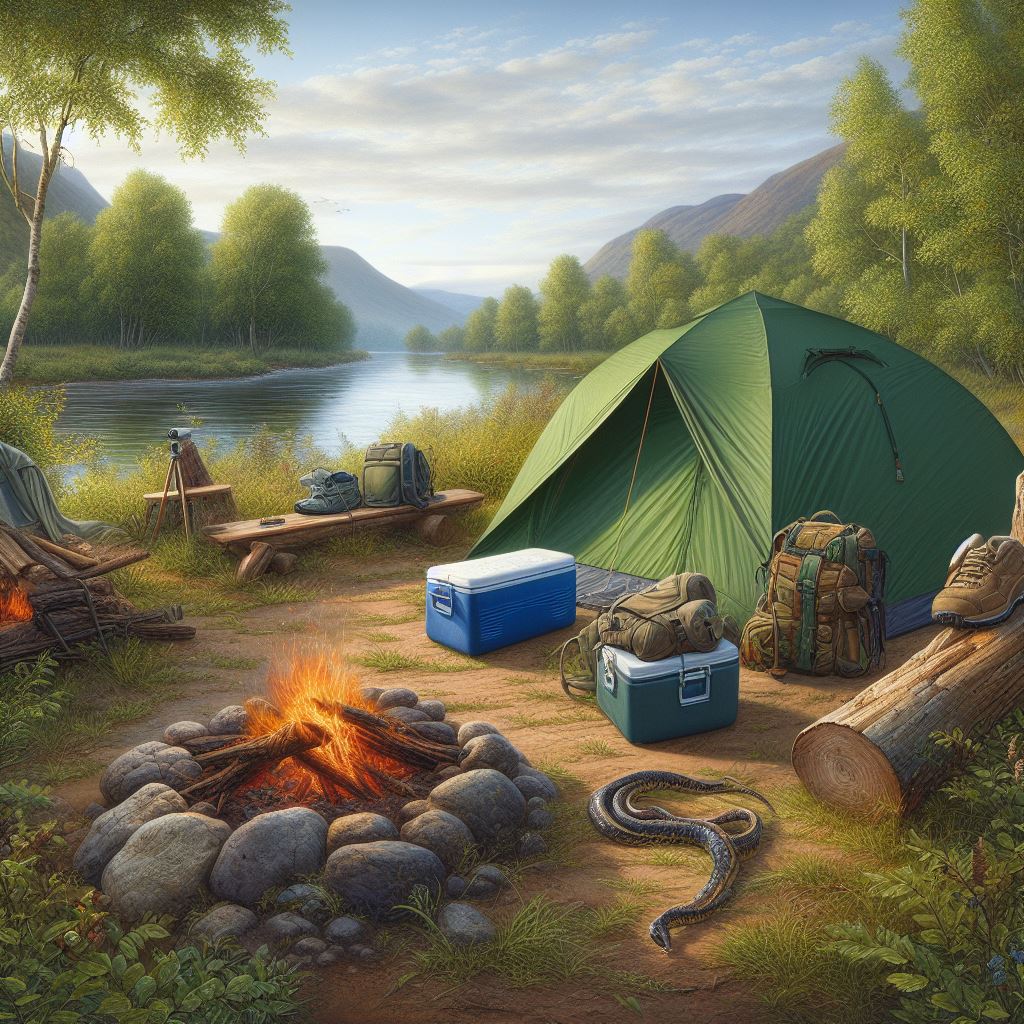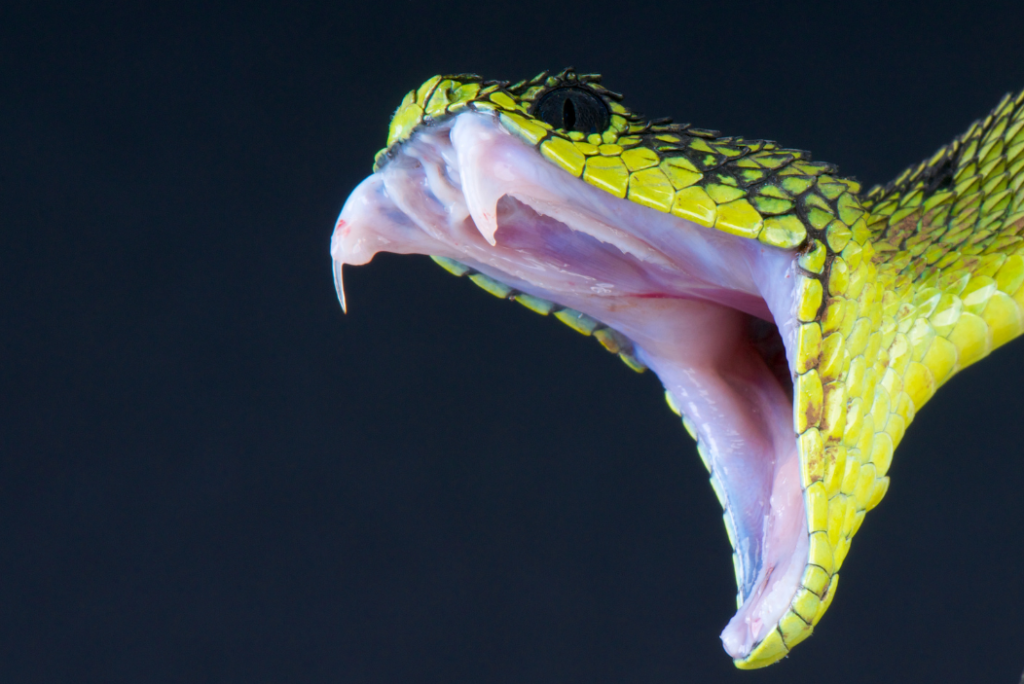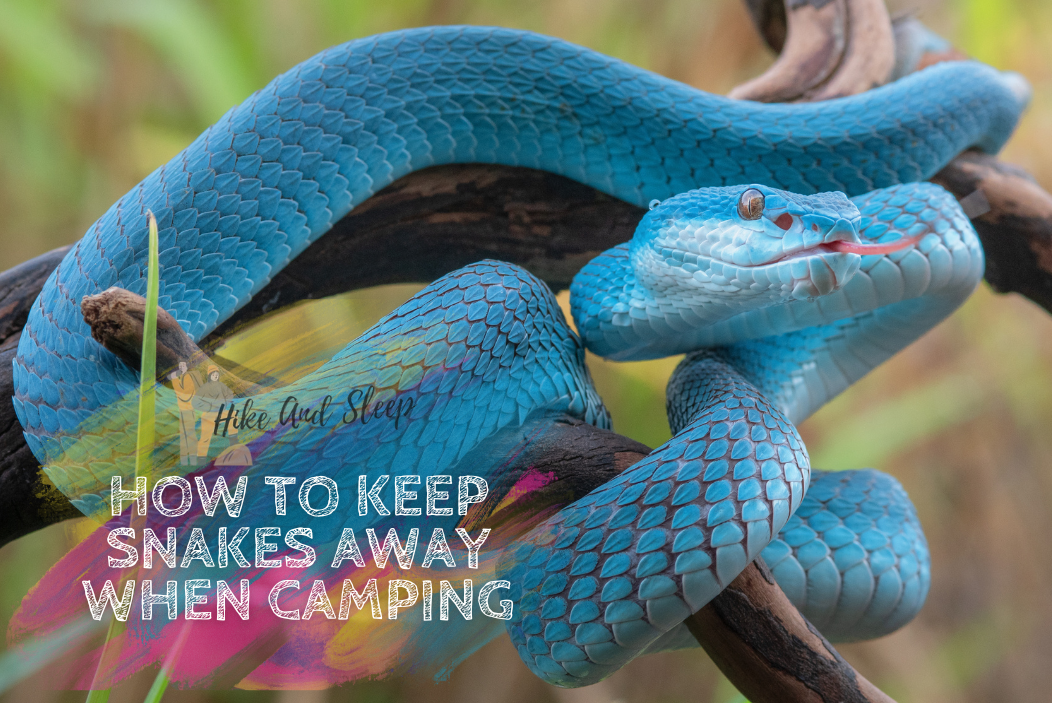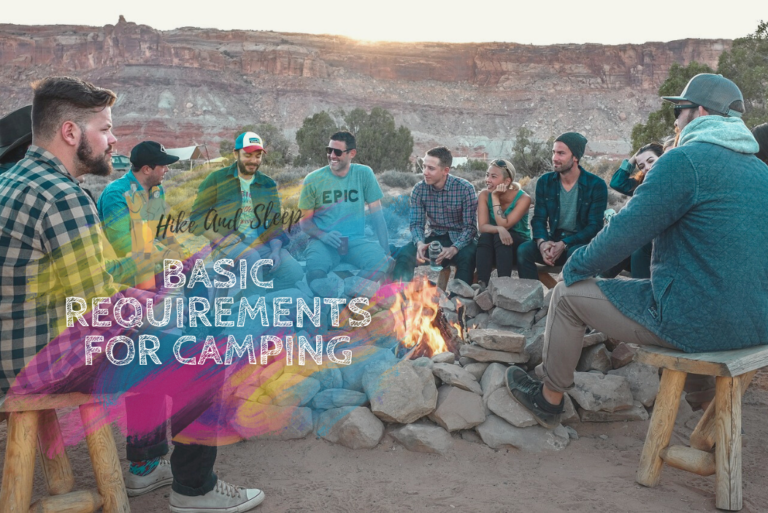How To Keep Snakes Away When Camping
Imagine enjoying the serenity of the great outdoors, basking in the freedom of nature, when suddenly, a slithering creature interrupts your tranquility.
Fear not, for this article will equip you with the knowledge and tools needed to keep snakes at bay during your camping adventures.
From understanding snake behavior to securing your campsite with snake-repellent techniques, we will empower you with the essential skills to enjoy the freedom of camping without the unwelcome presence of these reptiles.
Table of Contents
Key Takeaways
- Choose a campsite away from dense vegetation and water sources.
- Keep your campsite clean and tidy, and properly dispose of leftover food.
- Use snake-proof containers for storing food and inspect gear before and after each use.
- Consider using snake-proofing gear such as Snake Gaiters, Snake Hooks, Snake Repellents, Snake Tongs, and Snake-Proof Shelters for added protection.

Understanding Snake Behavior
One key aspect of understanding snake behavior is the careful observation of their natural habitats and the frequency with which they exhibit certain behaviors.
Snakes have evolved over millions of years to adapt to various environments and their behavior is closely tied to their habitat. By studying their natural habitats, we can gain insight into how snakes use camouflage and how they interact with their surroundings.
Snake camouflage is a remarkable adaptation that allows these reptiles to blend seamlessly into their environment. Different snake species have developed camouflage patterns that match the colors and patterns of their surroundings, making them almost invisible to predators and prey.
Recommended Read:
- Are Coyotes a threat while camping
- Camping fears
- Solo camping for women
- How to secure dogs while camping
For example, some snakes that inhabit grassy areas have scales that resemble the colors of the surrounding vegetation, while others that live in sandy environments have scales that mimic the texture and color of the sand.
Understanding snake habitat is crucial in comprehending their behavior. Snakes are found in a wide range of habitats, including forests, deserts, grasslands, and wetlands.
Each habitat presents different challenges and opportunities for snakes, influencing their behavior in unique ways. For instance, snakes in forested areas may spend more time climbing trees, while those in desert environments may exhibit more burrowing behavior to escape the heat.
Choosing a Snake-Repellent Campsite
When choosing a campsite, it is important to consider factors that can help repel snakes and minimize the risk of encountering them. By understanding snake behavior and their preferred habitats, campers can take proactive steps to ensure a snake-free camping experience.
Here are some tips to help you choose a snake-repellent campsite:
- Avoid areas with dense vegetation: Snakes are often found in areas with thick undergrowth, so look for campsites with open spaces and well-maintained trails.
- Stay away from water sources: Snakes are attracted to water sources such as rivers, lakes, and ponds. Choose a campsite that is located away from these areas to reduce the chances of encountering snakes.
- Look for elevated ground: Snakes prefer low-lying areas where they can hide and seek shelter. Opt for campsites on higher ground to minimize the risk of encountering snakes.
- Consider the time of year: Different snake species have different activity patterns. Research the common snake species in the area and choose a campsite during a time when they are less active, such as cooler months or early mornings.
- Check for signs of snake activity: Look for shed snake skins, snake tracks, or burrows near potential campsites. These signs indicate the presence of snakes and can help you choose a campsite that is less likely to have snakes.

Securing Your Campsite From Snakes
Effectively securing your campsite from snakes is crucial to ensuring the safety and peace of mind of all campers. When venturing into the great outdoors, it is important to be prepared and take necessary precautions to prevent unwanted encounters with snakes.
One of the key snake deterrent methods is to keep your campsite clean and tidy. Snakes are attracted to areas with food debris and shelter, so properly dispose of any leftover food and keep your campsite free of clutter.
Another important aspect of securing your campsite is snake-proofing your camping equipment. Snakes can easily slither into tents, sleeping bags, and backpacks, seeking warmth or shelter. To prevent this, make sure to inspect your gear before and after each use. Look for any holes or gaps that could serve as entry points for snakes and repair them promptly. Additionally, consider using snake-proof containers to store your food and other supplies, as these can help keep snakes away from your campsite.
Essential Snake-Proofing Gear and Tools
To effectively protect yourself from snake encounters while camping, it is essential to equip yourself with the necessary snake-proofing gear and tools. These items will not only provide peace of mind but also help minimize the chances of a dangerous encounter with snakes.
Here are five essential snake-proofing gear and tools to consider:
- Snake Gaiters: These are specially designed leg coverings that provide a physical barrier between your lower legs and any potential snake bites.
- Snake Hooks: These long-handled tools allow you to safely handle snakes from a distance, reducing the risk of getting bitten.
- Snake Repellents: There are various snake deterrents available in the market, such as natural oils and chemical sprays, that can help repel snakes from your camping area.
- Snake Tongs: Similar to snake hooks, snake tongs are used to safely capture and relocate snakes without causing them harm.
- Snake-Proof Shelters: Investing in a snake-proof tent or shelter can provide an additional layer of protection, ensuring that snakes cannot access your sleeping area.

Best Practices for Snake Encounters
While encountering snakes while camping can be a nerve-wracking experience, following best practices can help ensure your safety and minimize the risk of any negative interactions. One of the most important aspects of snake encounters is knowing how to provide snake bite first aid.
In the event of a snake bite, staying calm and seeking immediate medical attention is crucial. Remember to immobilize the affected limb and keep it below heart level to slow down the spread of venom.
Additionally, it is essential to have a basic understanding of snake identification and awareness. Educate yourself about the types of snakes that inhabit the area you are camping in, as well as their behavior and habitats. This knowledge will help you identify potentially dangerous snakes and avoid them.
Remember that snakes are typically more active during warmer months and at dawn or dusk, so exercise extra caution during these times.
Conclusion
In conclusion, by understanding snake behavior, choosing a snake-repellent campsite, securing your campsite from snakes, and having essential snake-proofing gear and tools, you can effectively keep snakes away while camping.
By following best practices for snake encounters, you can ensure a safe and enjoyable camping experience.
So don’t let fear of snakes keep you from enjoying the great outdoors, take these precautions and keep those slithery creatures at bay!







